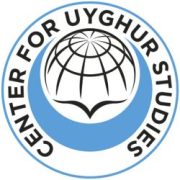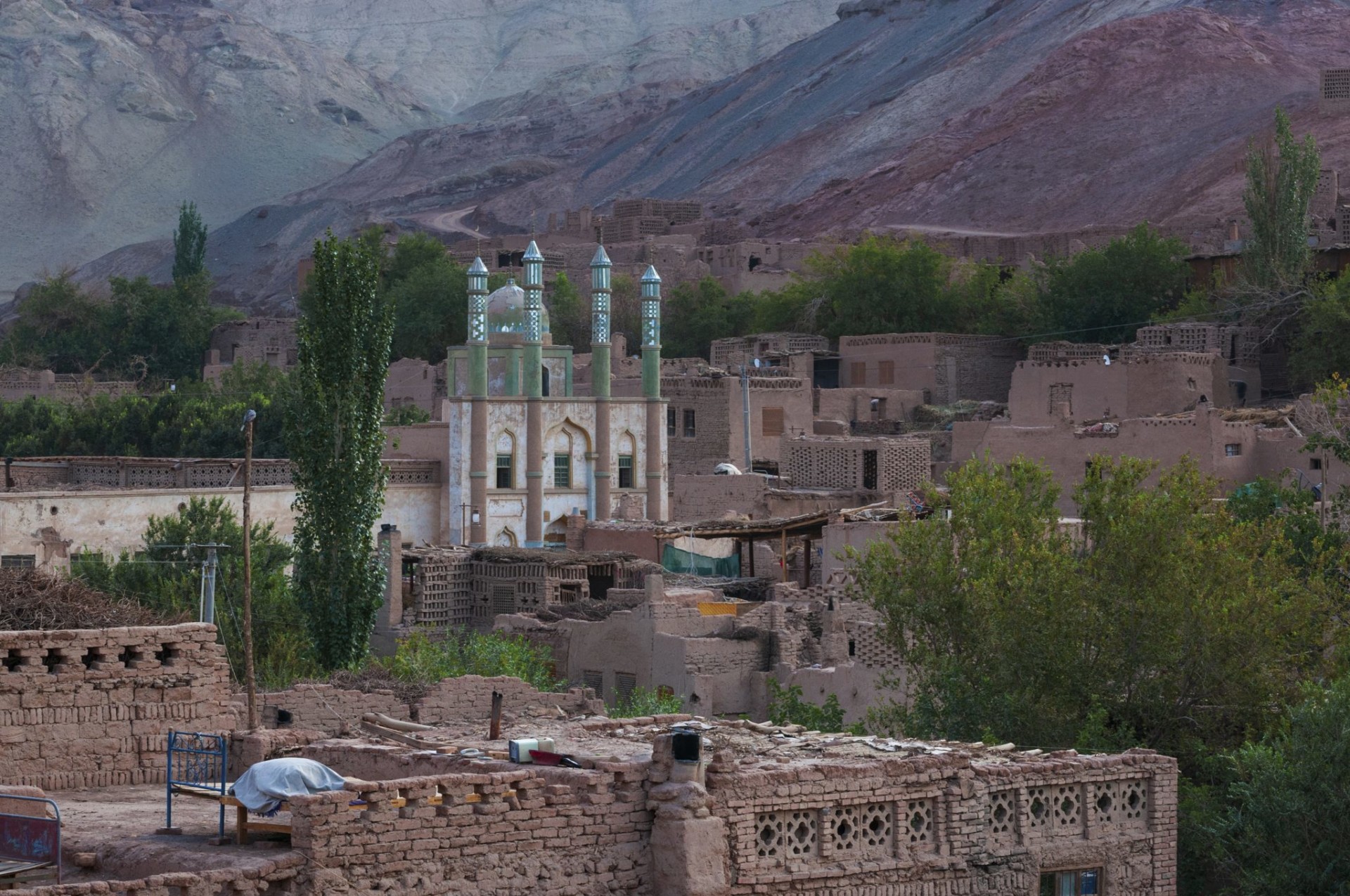The wind whispered through the ancient alleys of Kashgar’s Old City, carrying with it the echoes of a civilization that had endured for millennia. But for Alim, a local Uyghur shopkeeper, those whispers were growing fainter by the day. He stood in the doorway of his small shop, watching as bulldozers rumbled down the street; metal jaws tearing into centuries-old buildings with ruthless efficiency.
Alim’s story is just one thread in the tapestry of the cultural erasure being woven across East Turkistan. For generations, the Uyghur people had called this land home, their identity deeply rooted in its soil, their traditions as enduring as the Taklamakan Desert itself. But in recent years, a storm has been brewing on the horizon, threatening to sweep away everything they hold dear.
The systematic destruction of Uyghur culture intensified in earnest in 2017, under the guise of Xi Jinping’s war on Uyghurs, “people’s war on terror” and a campaign of “sinicization“. What started as increased surveillance and restrictions on religious practices soon escalated into a full-scale assault on Uyghur identity. Mosques that had stood for centuries were razed to the ground; their intricate domes and minarets replaced by sterile government buildings. Ancient Uyghur cemeteries, once places of reverence and connection to ancestors, were bulldozed and paved over.
In Hotan, a city with deep historical roots, the landscape has been irrevocably altered. The Australian Strategic Policy Institute reported that between 2017 and 2020, approximately 16,000 mosques across East Turkistan – 65% of the total – were destroyed or damaged. Among them was the Jama Mosque, a 1,000-year-old architectural marvel that had survived countless rulers and regimes. Now, only memories and fading photographs remain.
The assault on Uyghur culture extends far beyond physical structures. In a chilling development, Human Rights Watch (HRW) revealed that Chinese authorities have been systematically changing the names of hundreds of villages across the Uyghurs’ homeland. Names rich with religious, historical, or cultural significance for Uyghurs are being replaced with generic terms reflecting Chinese Communist Party ideology. The village of “Imam Mazar” (Imam’s Shrine) becomes “Happiness Village.” “Sultan Kirishi” (Sultan’s Entrance) is now “Harmony Street.” With each name change, a piece of Uyghur history is erased, replaced by a sanitized version of reality approved by the state.
The HRW report details the extent of these changes. The research identified approximately 630 villages where names had been altered to remove religious or cultural references. The majority of these changes occurred during the height of the crackdown on Uyghurs, which several governments and human rights bodies have labeled a genocide. The new names, devoid of religious, historical, or cultural references, are part of thousands of seemingly innocuous name changes. The two organizations identified three primary categories of name modifications. Religious and Uyghur cultural practices were eliminated, including “Hoja”, a title for a Sufi religious teacher, which was removed from at least 25 village names; “Haniqa”, a type of Sufi religious building, taken from 10 village names; and “Mazar”, meaning shrine, which was removed from at least 41 village names.
Additionally, names referencing Uyghur kingdoms, republics, or leaders prior to 1949, when the People’s Republic of China was established, were erased. There are no longer any villages in East Turkistan with the words “Xelpe” or “Khalifa” (caliph, ruler), or “Mesjit” (mosque) in their names.
The practice of renaming locations, like many of the policies imposed in East Turkistan, was first initiated in Tibet. Since 2023, the Chinese government has begun referring to Tibet as ‘Xizang’ on official documents. Since 2017, official Chinese names have been issued for locations in Arunachal Pradesh, the disputed Himalayan region where China claims territory.
For Gulnisa, a Uyghur woman now living in exile, the pain of this erasure is deeply personal. “My grandmother’s village, where our family had lived for generations, was called ‘Orda Osteng’, which means ‘Palace Canal’. Now I hear it’s been renamed ‘Prosperous Road.’ But what prosperity can there be when our very identity is being stripped away?” she recounts, her voice thick with emotion.
The cultural genocide extends to the very language of the Uyghur people. Mandarin Chinese has replaced Uyghur as the primary language in all schools across East Turkistan. Children are forbidden from speaking their mother tongue, even during breaks. Uyghur language books have been burned and authors, academics, and intellectuals imprisoned for the crime of preserving their cultural heritage.
In the name of “vocational training” and “poverty alleviation”, hundreds of thousands of Uyghurs have been sent to concentration camps. Survivors speak of forced indoctrination, where detainees are compelled to renounce their faith, sing patriotic songs, and pledge allegiance to the Chinese Communist Party (CCP). Satellite imagery and eyewitness accounts reveal a vast network of these camps, their high walls and watchtowers a stark reminder of the human cost of cultural erasure.
The international community has not remained silent in the face of these atrocities. In January 2021, the U.S. State Department determined that China’s atrocities against the Uyghurs amounted to genocide and crimes against humanity. The European Parliament, Canada, and the Netherlands have made similar declarations. Yet, the cultural destruction continues unabated.
While UNESCO, tasked with protecting cultural heritage worldwide and that has been vocal about the destruction of cultural sites in Ukraine, its response to the situation in East Turkistan has been silent. This discrepancy has not gone unnoticed, with critics arguing that UNESCO’s silence amounts to tacit approval of China’s actions.
As the sun sets over the transformed landscape of East Turkistan, the full extent of the cultural genocide becomes clear. It is not just buildings and names that are being erased, but the very soul of a people. The Uyghur way of life – their customs, their beliefs, their connections to the land – is being systematically dismantled and replaced with a state-approved version of Chinese culture.
For Alim, Gulnisa, and millions of other Uyghurs, the future is uncertain. Their struggle is not just about preserving buildings or names, but about fighting the ethnic cleansing of their people as a whole. As the world watches, the question remains: will the rich tapestry of Uyghur culture survive this onslaught, or will it become nothing more than a fading memory, whispered on winds that blow across a changed land?
The implications of these actions are profound and far-reaching. Under international law, the erasure of cultural heritage and forced assimilation of an ethnic group can be considered acts of genocide. Article 27 of the International Covenant on Civil and Political Rights, which China has signed but not ratified, states that, “In those States in which ethnic, religious or linguistic minorities exist, persons belonging to such minorities shall not be denied the right, in community with the other members of their group, to enjoy their own culture, to profess and practice their own religion, or to use their own language”.
The United Nations Human Rights Council (UNHRC), the independent expert body that interprets the covenant, has stated in a General Comment that, “The protection of these rights is directed towards ensuring the survival and continued development of the cultural, religious and social identity of the minorities concerned, thus enriching the fabric of society as a whole…. These rights must be protected as such”.
Despite the clear violations of these principles, the Chinese government continues its campaign with little regard for international condemnation. The renaming of villages, the destruction of mosques and shrines, and the forced assimilation policies are all part of a broader strategy to erase Uyghur identity and replace it with a homogenized version of Chinese culture. This strategy is not only about controlling the present but also about rewriting history and shaping the future.
The international community must continue to shine a light on these atrocities and hold the Chinese government accountable for its actions. This means not only condemning the policies but also supporting efforts to preserve Uyghur culture. This could involve providing platforms for Uyghur voices, supporting cultural preservation initiatives, and ensuring that the world does not forget the rich heritage of the Uyghur people.
As the world watches, the Uyghur people continue to resist. In exile, they work tirelessly to preserve their language, traditions, and identity. In Istanbul, a growing Uyghur diaspora has found refuge and a reconnection to their culture. Schools teach the Uyghur language, and community centers offer classes in traditional music and dance. These efforts are a testament to the resilience of the Uyghur people and their determination to keep their culture alive, no matter the odds.
The story of the Uyghurs is one of struggle and resilience, of a people fighting to preserve their identity in the face of overwhelming odds. It is a story that must be told and retold, to ensure that the world does not forget the rich tapestry of Uyghur culture and the ongoing efforts to erase it. The wind may whisper through the ancient alleys of Kashgar’s Old City, but as long as there are people like Alim and Gulnisa, those whispers will not be silenced.
Copyright Center for Uyghur Studies - All Rights Reserved

